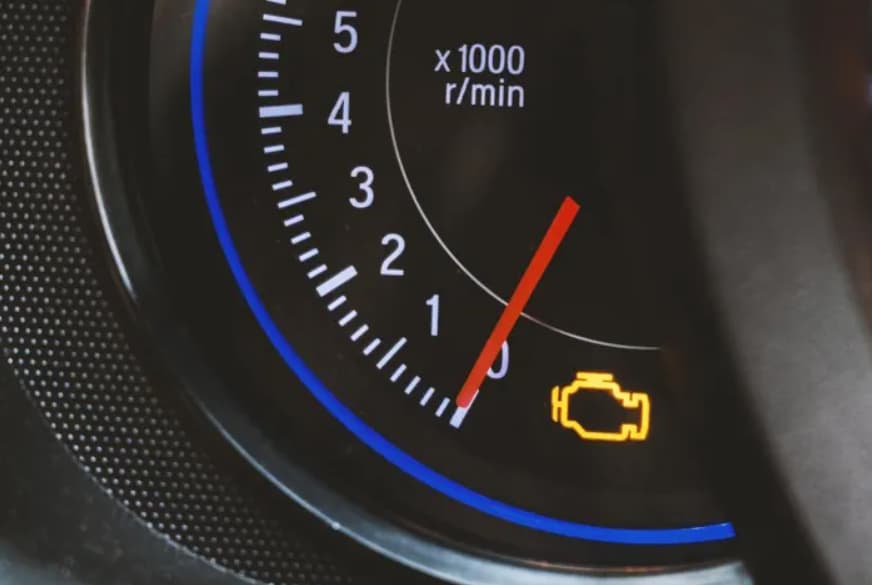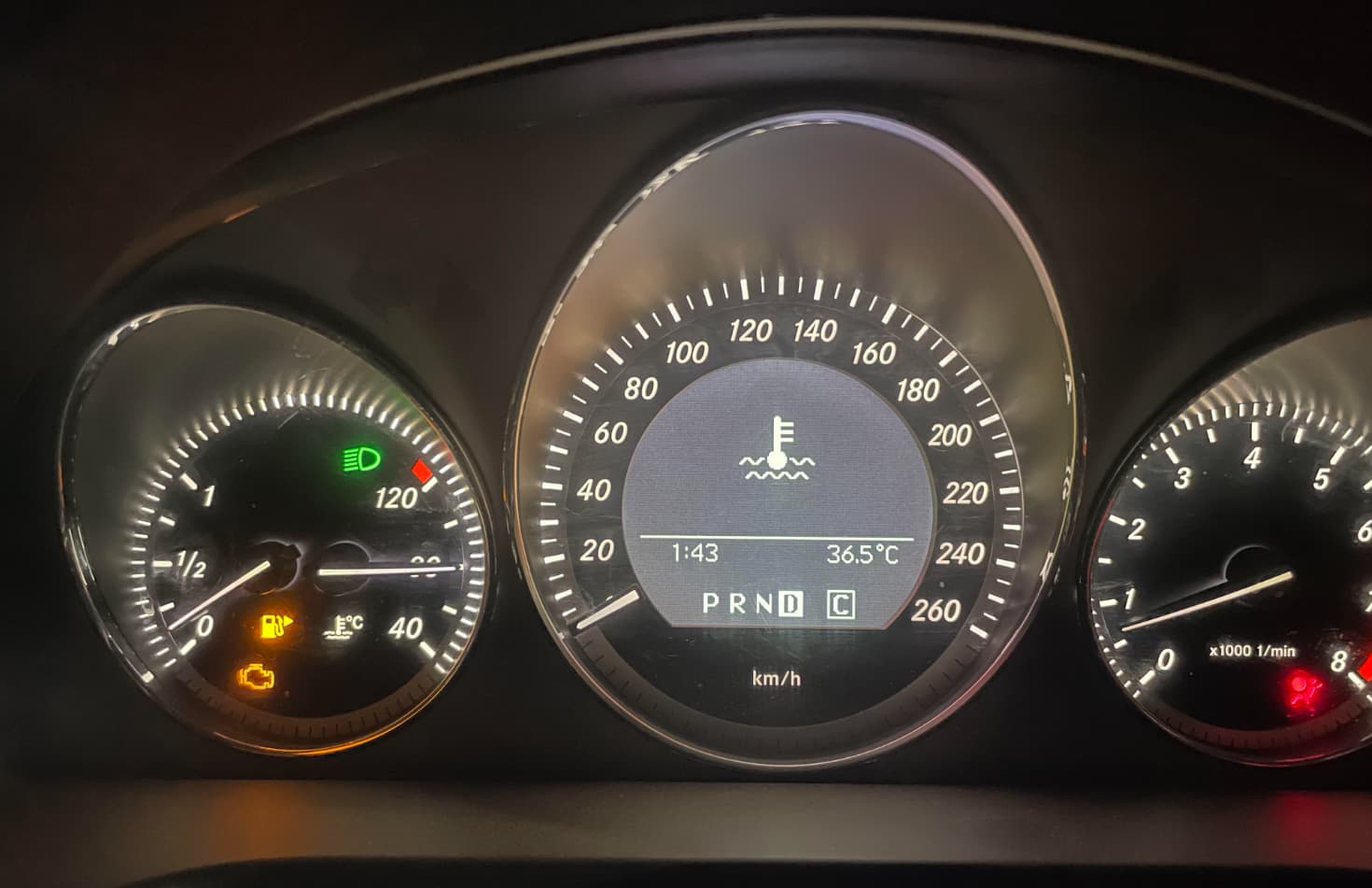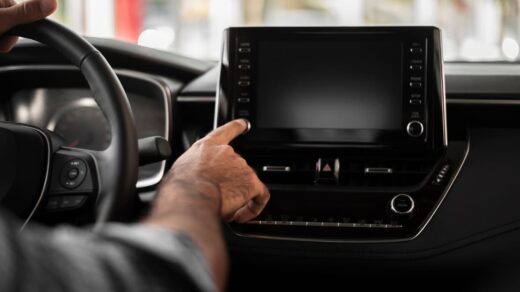The glowing orange check engine light in your car’s dashboard is like a nagging backseat driver – it’s trying to tell you something is wrong, but not exactly what.
That little light can mean anything from a loose gas cap to a major engine issue.
How Long Can You Drive With A Blinking Engine Light?

But when the light starts blinking, things have escalated to critical levels. Now the question becomes, how long can you safely drive with a blinking check engine light before causing permanent damage?
How Long Can You Drive With A Blinking Engine Light?
Short Answer: Don’t drive more than 10-20 miles.
What Does A Blinking Check Engine Light Mean?
A steady check engine light generally indicates a problem that is damaging emissions controls or reducing performance/fuel economy.
These issues may be annoying, but they usually don’t pose an immediate threat or require emergency action (still, get it checked out ASAP).
However, a blinking check engine light signals there is an active misfire occurring. This means one or more engine cylinders are not firing properly.
An engine misfire can severely damage components like the catalytic converter. Driving any length of time with a blinking CEL risks causing permanent and very costly damage.
How Far Can You Drive With Blinking Check Engine Light?
Experts recommend driving no more than 10-20 miles with a blinking check engine light. This allows you to get off the road or highway to a safe location.
Any more than that, and you risk causing engine damage that requires repairs in the thousands of dollars.
What To Do If Your Check Engine Light Blinks?
Here are important steps to take if confronted with a blinking check engine/check motor light:
- Pull over ASAP – Get the vehicle stopped in a safe area out of traffic. Do not ignore the blinking light or continue driving normally.
- Call for assistance – Have the vehicle towed to a repair shop. Do not attempt to drive excessive distances. A tow truck prevents putting more wear on the misfiring engine.
- Diagnose codes – Mechanics can scan for diagnostic trouble codes (DTCs) to reveal the specific cylinder(s) misfiring and the cause of the problem. Common causes include faulty spark plugs/wires, bad coil packs, clogged fuel injectors, low fuel pressure, or vacuum leaks.
- Fix issue promptly – Diagnose and repair the misfire immediately to avoid damaging the catalytic converter, which can add $1,000 or more to repair costs. Address other stored codes after fixing the blinking CEL emergency.
Consequences Of Driving With Blinking Check Engine Light
A flashing check engine light is serious business. By continuing to operate the vehicle, you risk:
- Catalytic converter failure – Unburned fuel from misfires gets ignited inside the catalytic converter, generating excessive heat that melts the honeycomb structure and ceramic elements
- Oxygen sensor damage – Misfiring cylinders dump raw fuel that contaminates and ruins the oxygen sensors
- Increased emissions – Malfunctioning cylinders pump unburned hydrocarbon (HC) and carbon monoxide (CO) emissions into the air, failing an emissions test
- Poor drivability – The engine may produce diminished power, stumble, stall, or idle roughly with a severe misfire
- Fast engine wear – Fuel washing down cylinder walls without combusting accelerates ring, piston, and cylinder wall wear
FAQ – Check Engine Light Flashing
- What causes the check engine light to blink and then stop?
A blinking CEL that stops is usually caused by an intermittent misfire. This could be from bad spark plugs, worn fuel injectors, low fuel pressure, or a failing ignition coil.
- Is it safe to drive if the check engine light is flashing and then goes solid?
No. The engine still misfired, which risks damage. Get codes scanned and repairs done even if the light stops blinking.
- Can low transmission fluid cause the check engine light to blink?
Yes. Low transmission fluid levels could trigger incorrect gear ratio readings and cause transmission issues that activate the blinking check engine light.
- Will the disconnected battery reset the blinking check engine light?
Maybe temporarily. But if the underlying condition causing the misfire wasn’t fixed, the blinking CEL will just come back on after restarting the engine.
- How many miles can you drive with a blinking check engine light?
Experts only recommend driving 10-20 miles max with a blinking CEL to prevent damage. Have the vehicle towed beyond that.
- What’s the difference between a solid and a blinking check engine light?
Solid means an emissions or performance issue. Blinking signals immediate engine misfire problems that require urgent attention to prevent damage.
- Can a bad mass air flow sensor cause the check engine light to blink?
Yes. An inaccurate air flow reading confuses the computer causing it to deliver too much or too little fuel, triggering misfires.
- Will check engine light blink if the battery is low?
Yes. A weak battery may not deliver enough amps to properly ignite the fuel, causing cylinders to misfire and blink check engine light.
- Can a loose gas cap trigger a blinking check engine light?
No. A loose or missing gas cap only activates a solid check engine light for evaporative emissions leaks. It doesn’t directly cause misfires.
- How much does it cost to fix the blinking check engine light?
$200-$400 for minor issues but up to $2,000+ if the catalytic converter, sensors, or computer modules need replacing.
Also Check:
- Why Your Ninja Blender Power Light is Blinking Red
- Why Is My EE Router Flashing Aqua
- Spectrum Router Blinking Blue and White
In Closing:
The bottom line – a blinking check engine light is your vehicle’s way of saying “I have a serious problem, please stop driving me now!” Listen to those warnings.
Continue operating a vehicle with a flashing CEL risks causing engine misfires and catalytic converter failure costing $1,000+ in parts and labor to fix.
Tow the car and have misfire codes diagnosed ASAP before permanent damage happens. Your engine and wallet will thank you!



